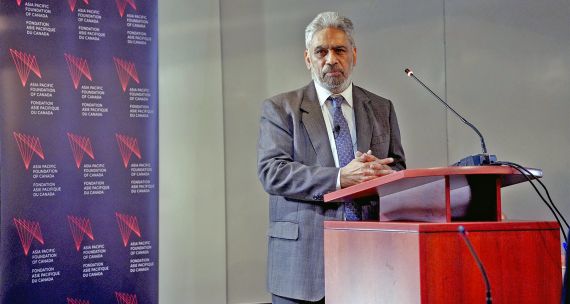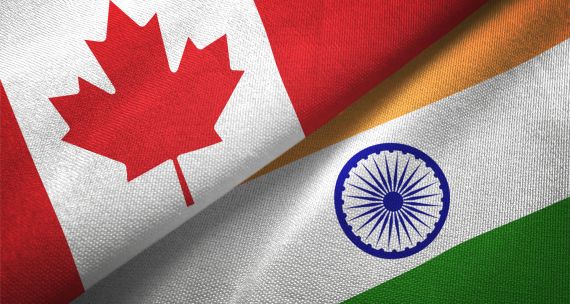Now is the time for Canada to capitalize on its renewed relationship with India
India’s Prime Minister Narendra Modi swept to power on the promise of honest government, effective administration, and urgent economic reform. Nineteen months later the headlines of victory have given way to the realities of governing the world’s fourth-largest economy and its most-populous democracy.
Modi’s visit to Canada last spring — which occurred notably early in his term and marked the first visit by an Indian prime minister in 42 years — was a landmark moment in the Canada-India relationship and underscored Modi’s desire to build strong ties with key allies abroad.
During the visit, six significant initiatives were signed, 13 memorandums of understanding were inked, and a breakthrough was achieved in commercial nuclear cooperation. The trip was described as transformative, and promised to embolden a two-way trade relationship already worth $6.8 billion in 2014.
Several months later, newly elected Prime Minister Justin Trudeau recognized the significance of the India reset under Modi. In his mandate letter to Canada’s minister of international trade just nine days into the job, Trudeau called for a “targeted strategy to promote trade and investment with emerging markets,” and singled out India (and China) for particular attention. Trudeau reportedly plans to lead a high-level trade mission to India later this year.
At the sub-national level, where many of the successful linkages between Canada and India occur, Ontario Premier Kathleen Wynne has announced her intention to lead a mission to India from Jan. 27 to Feb. 6 to “lay the foundations for future business deals and strengthen cultural ties between India and Ontario.” Wynne is particularly interested in the opportunities inherent in India’s Five-Year Plan to invest over $1 trillion US in infrastructure over the next 20 years as part of its Smart Cities Initiative.
But now that the bloom is off Modi’s election rose, what can Canadian leaders expect to find in this new and changing India?
In his successful quest for electoral victory, Modi led his party to victory along two distinct paths. One was the charge that the previous United Progressive Alliance government was corrupt and had allowed its cronies to stash ill-gotten gains abroad. The other was the charge that the economy had gone into a tailspin and the momentum of growth had been dissipated because of poor management. Modi built his campaign on the promise to right these wrongs and to bring the stashed wealth home. On the economic front, he promised a revival — what he termed the return of “acchey din” (good days).
In the eyes of the average Indian, the pocketbook issues of “acchey din” — jobs, lower inflation, rural prosperity and improved social and civic amenities — are what matter most. And not just as subjective priorities, but as something that the average citizen can verify through their everyday experience. Allegations of high-level corruption are the bubble of the evening TV, a world like Bollywood films, remote from their daily workaday lives.
Indeed, the challenge of improving India’s sluggish economy is where the Modi government’s performance was going to be tested, and so far it seems to have been found wanting; the recent electoral reverses for Modi’s party are consequences. Inflation has certainly fallen — but it is due largely to collapsing commodity prices and weak domestic demand. GDP growth has improved, and yet the “finger-in-the wind” test does not gel with the government’s reported numbers.
Still, India’s consumer confidence index, a measure of Indians’ personal finance optimism, has risen steadily since Modi’s election back to its 2009 all-time high of 131 points. And not only Indian consumers but foreign investors have faith in the future of India’s economy. The investment arm of the Canada Pension Plan, for example, announced last October the opening of a new office in Mumbai in order to enlarge its long-term investment footprint in the country.
Meanwhile, Modi has shown great enthusiasm for the use of new technologies to improve governance, boost entrepreneurship, and increase start-ups. He is committed to the ‘Make in India’ program to rapidly expand the manufacturing sector across the country and has ensured the scheme includes future-proofing India’s youth with skills training. The desired dividend in the form of more jobs is not yet evident on the ground, largely because of the slow pace of overall economic recovery.
Indeed, it is the sluggish economy that has been and continues to be Modi’s primary challenge. His problems are compounded by the burden of his campaign on high corruption, which has borne little fruit. No treasure trove of ill-gotten wealth has been unearthed overseas (or at home), but new legislation and suspicious tax officers have made life avoidably hard for businesses.
Modi wants the economy to rebound. It surely will eventually, but in order to make up for the time that has been lost he will need to completely reassess the overarching approach of his government to-date, including the burden of crafting policy guided by once-convenient electoral campaign issues.
The PM’s problems have been compounded by divisive sectarian squabbles — stemming from those in his own party and from organizations close to it. In his election campaign Modi repeatedly asserted that “development” was his only agenda and that above religion, ethnicity or caste, the only identity that mattered to him was ‘Indian.’ That certainly reverberated with most Indians and won him support. But late last summer an inflammatory campaign against “beef-eating” that had a clearly sectarian character vitiated the atmosphere. Modi, for reasons best known to him, chose not to condemn this campaign unequivocally and quickly, and it undercut the gains he had made over the head of sectarian politics on the campaign trail.
But while the Indian prime minister’s challenges may be many, and the criticisms sharp, “Modi Momentum” has become an undeniable force galvanizing a deeply pluralist federation of states around the common goal of a modernized, self-sufficient and globally competitive India. And with the Canada-India relationship at its best since the 1960s, it is critical that Trudeau and Wynne bring focus to the opportunities for mutual economic development.
This piece first appeared in The Vancouver Sun on January 29, 2016.



